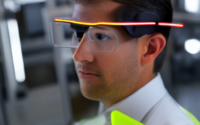How Engineers Use 3D Printing for Product Prototyping
How Engineers Use 3D Printing for Product Prototyping
Introduction to 3D Printing:
3D printing, also known as additive manufacturing, is a revolutionary technology that allows engineers to create three-dimensional objects layer by layer from a digital design. This process has gained significant popularity in recent years due to its versatility and cost-effectiveness in various applications. One of the key areas where 3D printing has made a significant impact is product prototyping. In this article, we will explore how engineers harness the power of 3D printing to streamline the product development process.
Rapid Prototyping with 3D Printing:
Traditionally, product prototyping involved lengthy and expensive processes like CNC machining or injection molding. These techniques require costly tooling and often take weeks or even months to complete. However, with 3D printing, engineers can rapidly produce prototypes directly from a digital CAD model in a fraction of the time and cost.
By utilizing 3D printers, engineers can quickly iterate and refine designs. This agility allows them to identify design flaws, functional issues, or any areas of improvement early in the development process. With faster turnaround times, engineers can accelerate the overall product development timeline and reduce costs associated with multiple iterations.
Design Freedom and Complexity:
3D printing enables engineers to explore new design possibilities that were previously unachievable with traditional manufacturing techniques. The layer-by-layer additive manufacturing process allows for complex geometries, intricate details, and customized features.
Engineers can leverage this design freedom to create prototypes that closely resemble the final product. They can also incorporate complex internal structures, lattice designs, or organic shapes, which can improve performance, aesthetics, and functionality.
Furthermore, 3D printing allows for easy modifications to the design. If engineers identify any design shortcomings during the prototyping phase, they can quickly make adjustments to the digital model and print an updated prototype, saving time and resources compared to traditional methods.
Materials for 3D Printing Prototypes:
3D printing offers a wide range of materials to choose from, enabling engineers to select the most suitable material for their prototype’s specific requirements. Some commonly used materials for prototyping include:
1. PLA (Polylactic Acid): PLA is a biodegradable and easy-to-print material, excellent for initial concept testing and visual models.
2. ABS (Acrylonitrile Butadiene Styrene): ABS is a durable and impact-resistant material used for functional testing and prototypes that require strength.
3. Nylon: Known for its high strength and durability, nylon is suitable for functional prototypes subjected to mechanical stress.
4. Resin: Resin-based 3D printers offer high-resolution prints with excellent detail, making them ideal for producing intricate prototypes or parts with fine surface finishes.
These are just a few examples, and there are many other material options available depending on the specific requirements of the prototype.
Optimizing Prototypes for Testing:
While 3D printed prototypes are valuable for visual and form testing, engineers can also optimize them for functional and performance testing. Here are a few techniques they can employ:
1. Hollowing: By making the prototype hollow, engineers can reduce material consumption and printing time. Additionally, the hollow structure can simulate the intended weight distribution of the final product.
2. Infill Density: Engineers can adjust the infill density of the printed part to control its strength and weight. Higher infill density provides better structural stability, while lower density reduces material usage.
3. Support Structures: When printing complex or overhanging geometries, support structures are necessary to prevent deformation or collapse during the printing process. These supports can be removed after printing.
By optimizing the prototypes for specific testing requirements, engineers can gather valuable data about the product’s performance, functionality, and durability.
Transitioning from Prototypes to Production:
Once engineers have iteratively refined and tested their prototypes using 3D printing, they can transition to the production phase. While 3D printing is excellent for prototyping, it may not always be the most efficient or cost-effective method for large-scale manufacturing.
For mass production, engineers can employ traditional manufacturing techniques like injection molding or CNC machining, which offer higher output rates and lower per-unit costs. However, the data and insights gained from 3D printed prototypes can significantly inform and improve the final production processes.
In some cases, engineers may also consider combining 3D printing with traditional manufacturing methods. For example, they can use 3D printing to create molds or tooling, which can then be used in the injection molding process.
By leveraging the strengths of both 3D printing and traditional manufacturing, engineers can optimize their production workflow and achieve the desired balance between cost, quality, and time-to-market.
Conclusion:
3D printing has revolutionized the product development process, particularly in the realm of prototyping. Its speed, cost-effectiveness, and design flexibility offer engineers unprecedented advantages in bringing innovative products to life.
Through rapid prototyping, engineers can iterate designs, identify and resolve issues early, and significantly shorten the development timeline. The ability to create complex geometries and customized features opens up new avenues for creativity and functionality.
While 3D printing is not always the final manufacturing method, it plays a crucial role in the product development cycle. By incorporating 3D printing into their workflow, engineers can accelerate innovation, reduce costs, and ultimately deliver high-quality products to the market.


